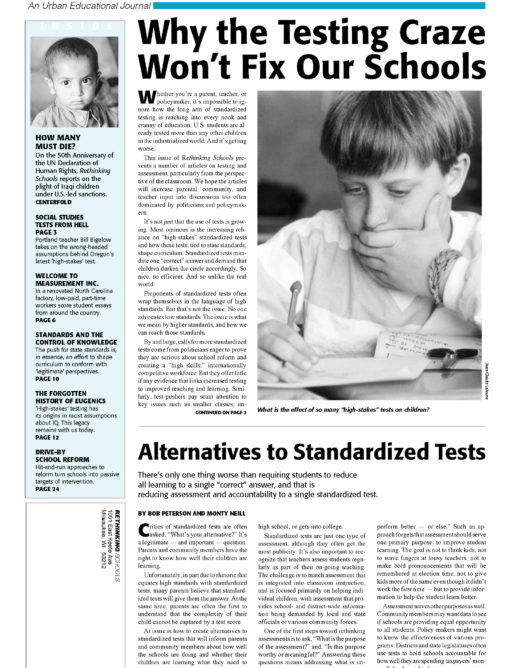Preview of Article:
The Straitjacket of Standardized Tests
A Portland teacher wonders: Where is the standardized test that can measure passion for learning, respect for others, and human empathy?
James never missed history class. Often, he had to sneak in and out of my room to hide from the dean because he rarely attended his other classes. He was our #1 cameraman and interviewer. Jennifer uncovered a quote from a neighborhood meeting, long lost in dusty boxes, that moved her to angry tears. History came alive for her. She wove it into our collective narrative text. The words of a state official resonated when she read his comment about the people who would be moved by urban renewal: “Frankly, we don’t give a damn about the renters.”
The end result of our work was a 30-minute documentary about South Portland and about the urban renewal that destroyed it. We were invited to show the piece at the Portland Art Museum auditorium. I got there early and stood outside on the street trying to help direct my students and their families to a facility where none had ever been, in a part of town where few ever ventured.
About 250 people attended our premiere that night. The students deftly answered questions from the audience and talked extensively about their experience.
Sol Shapiro was among the crowd of 250. Shortly before the show was scheduled to begin, I saw him walking toward me. He had on a plaid sports jacket with contrasting dark-blue tie and trousers. I waved. He waved back with noticeable hesitation. We greeted. “Tom, I didn’t know if you would remember me.”
“Sol, how could I forget?” I replied and grabbed his hand. I tried to hug him, but he pulled away.</p

